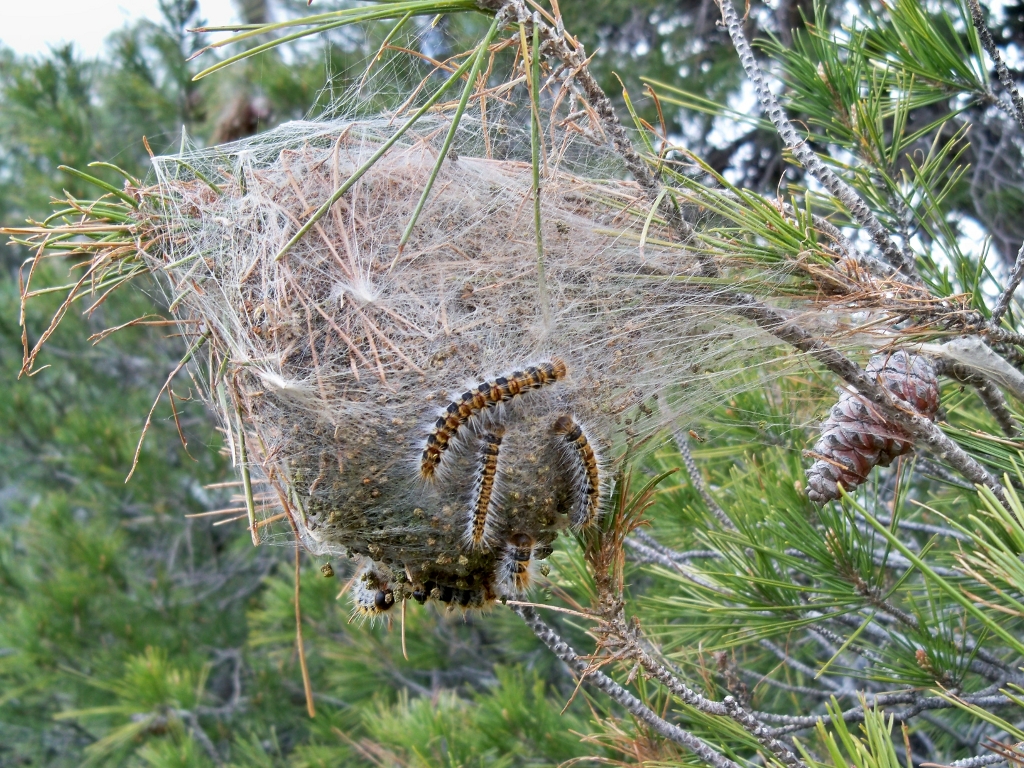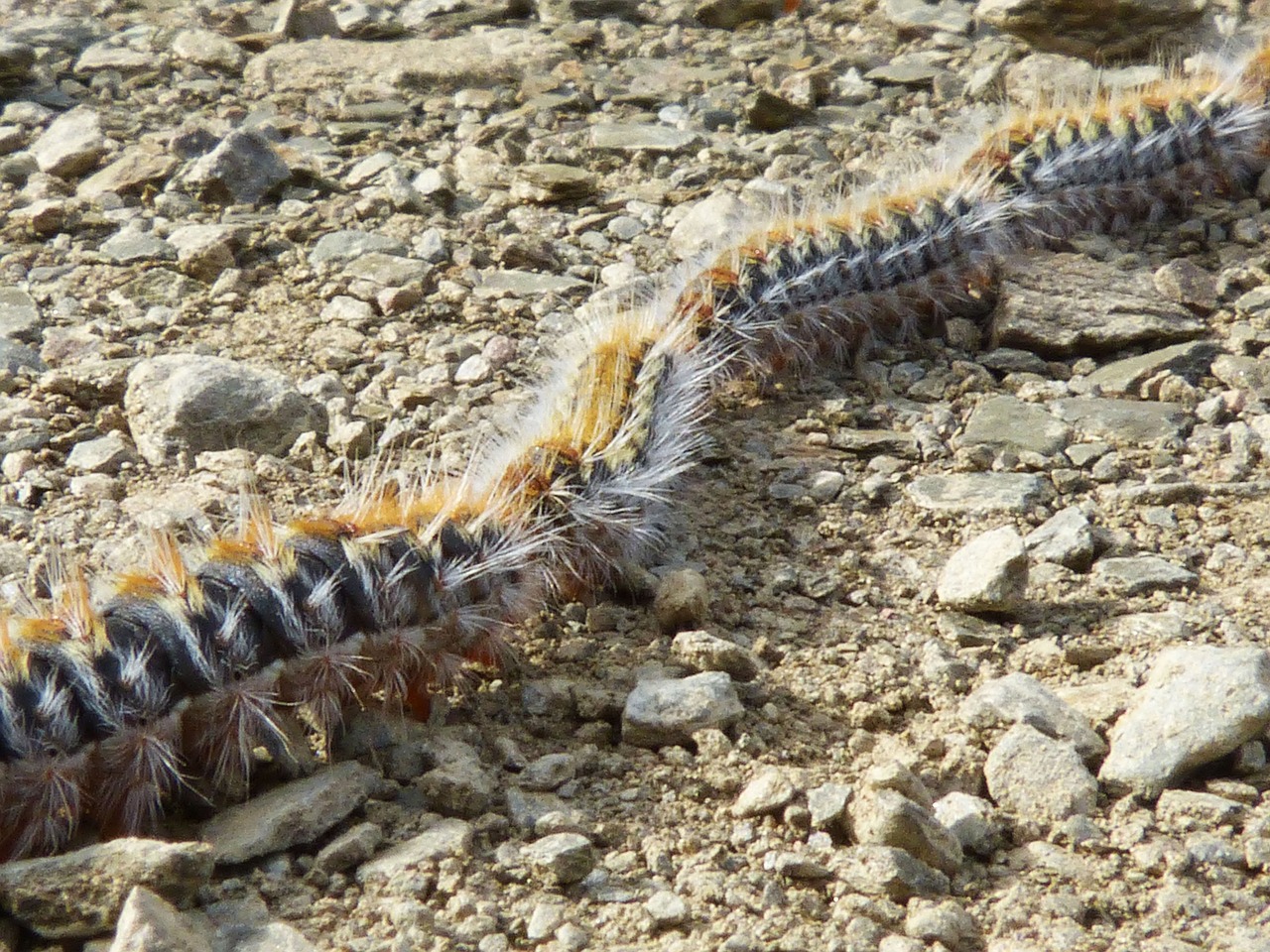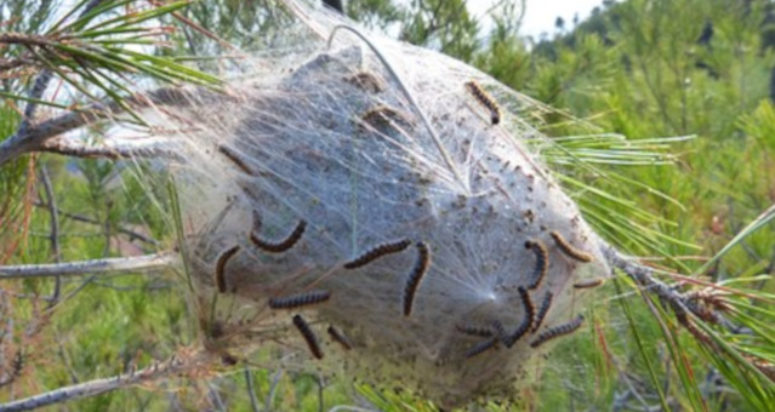If you live here in Spain, you need to be aware of a dangerous and often deadly critter known as the Pine Processionary Caterpillar (Thaumetopoea Pityocampa).
Unlike the vast majority of caterpillars, this particular species can be harmful to young children and sometimes fatal to dogs and cats.
Many dog owners have lost their pets after coming into contact with the caterpillars so it is important that you are familiar with them and the potential dangers.
In early spring, the processionary caterpillars leave their nests high up in the Mediterranean pine trees and head to the ground to pupate. When this happens, they potentially come into contact with young children and curious pets.
Below we provide you with everything you need to know about this insect including the dangers, how to identify them, where they can be found, how to stay safe and what to do if you come across them.
What is a Pine Processionary Caterpillar?
The processionary caterpillar is mostly found in wooded forests and can be identified by the thousands of small fine poisonous hairs or bristles that cover their bodies.
The caterpillars are 3-4cm in length and are usually an orange-brown colour.
The name ‘processionary’ comes from the fact that they create a procession or caterpillar style ‘conga’ from head to tail to form a long chain. It is not unheard of to see chains with hundreds of them all joined together.

In recent years, Europe has seen a big increase in numbers with Germany, the Netherlands and Belgium experiencing plague-like infestations.
The caterpillars can often be found in oak trees, which is where they were first discovered in the UK in 2006. However, here in Spain, they are more commonly found in pine trees which of course are a frequent sight.
The caterpillars are not only extremely toxic and therefore dangerous to anyone who comes into contact with them, they are also responsible for the destruction of the pine trees they inhabit.
Their nests are like tents and are usually found high up in the pine trees. The larvae (caterpillar) are considered to be real forest pests and will frequently come out at night and feed on the pine leaves

When the larvae are ready to pupate between late winter, early spring, they will march single file down the tree to the ground where they disperse looking for somewhere to continue their life cycle, often burrowing just below the surface.
Unfortunately, you don’t have to visit a forest to put yourself in harm’s way. Many of the parks and communal areas in Spain feature pine trees meaning that you can just as easily find them in urban areas.
Although many of the local councils will spray down the local municipal parks to prevent their spread, this isn’t always enough to keep them completely at bay. A brief search on the web will reveal many horror stories of dog owners losing their best friends after coming into contact with the caterpillars. In some cases, animals may need to have their tongues or parts of their lips amputated as a result. A horrible thought!

The dangers of the processionary caterpillar cannot be understated. The barbed hairs on their bodies are often fatal to dogs who either decide to eat one of the insects or sniff the hairs which can also be propelled by the caterpillar in an attempt to protect itself.
The hairs or bristles contain an urticating protein called Thaumetopoein which can in minor cases cause skin irritation or a rash much like that experienced after rubbing a stinging nettle. An antihistamine cream will usually be enough to alleviate the symptoms.
In more severe cases, humans can experience allergic reactions or respiratory problems. Asthmatics are particularly vulnerable and at risk of having a severe attack.
If you walk your dog in wooded areas, it is advisable to keep them on a tight lead at all times to make sure they don’t come into contact with the insects.
Loose hairs that can lie on the floor are also highly toxic as they will get caught in a dog's paw. The dog will then attempt to clean them which transfers the hairs to its tongue resulting in vomiting, swelling of the tongue and potentially suffocation.
If possible, avoid walking your dogs in wooded areas, especially during Spring.
Take a moment to watch this short video on the caterpillars.
When is Processionary Caterpillar Season?
Between December and April, the larvae will make their way to the ground in order to pupate and eventually turn into moths between May and July.
It is during these months that pets and young children are most vulnerable.
Where in Spain Do do You Find Processionary Caterpillars?
They’re found mostly in the Mediterranean region of southern Spain. The caterpillars are not exclusive to wooded areas, as they can also be found in pines that have been placed in communal or private gardens, at the golf course or by the roadside.

What to Do if You Find a Nest
If you do find a nest do not touch it! Contact the local authorities or specialists straight away so they can remove it safely.
Even if the nest is empty, the hairs from the caterpillars may still be present so still pose a danger to health. If the nests are not removed by a professional the hairs may become airborne causing further issues.
Make sure your neighbours are aware of the danger, especially those who may have young children, dogs or other pets.
What to Do if Your Pet Comes Into Contact With Them
If a dog or other pet comes into contact with processionary caterpillars, they may have small white spots around their mouth or on their tongue.
As the rash develops, this can lead to drooling and may cause your pet to become distressed. The tongue may also swell and lead to vomiting and potential suffocation.
If you believe your pet has come into contact with them, you should wash their mouth with warm water. It is advisable to wear gloves so you also do not get infected. It is then essential that you take them to a vet immediately. Do not delay!
The vet will most likely administer a fast-acting cortisone injection to reduce the swelling and irritation. They may be kept overnight for observation.